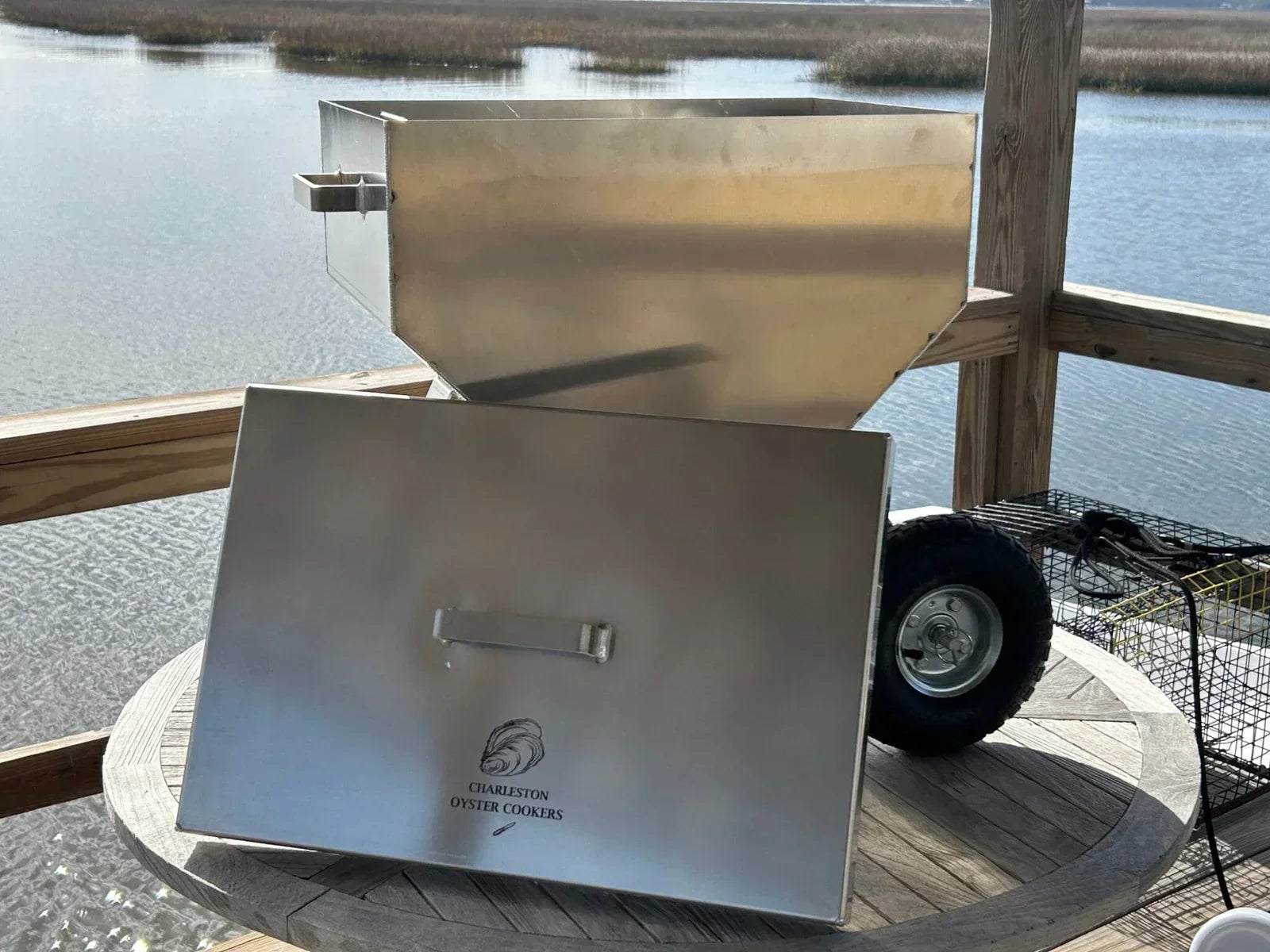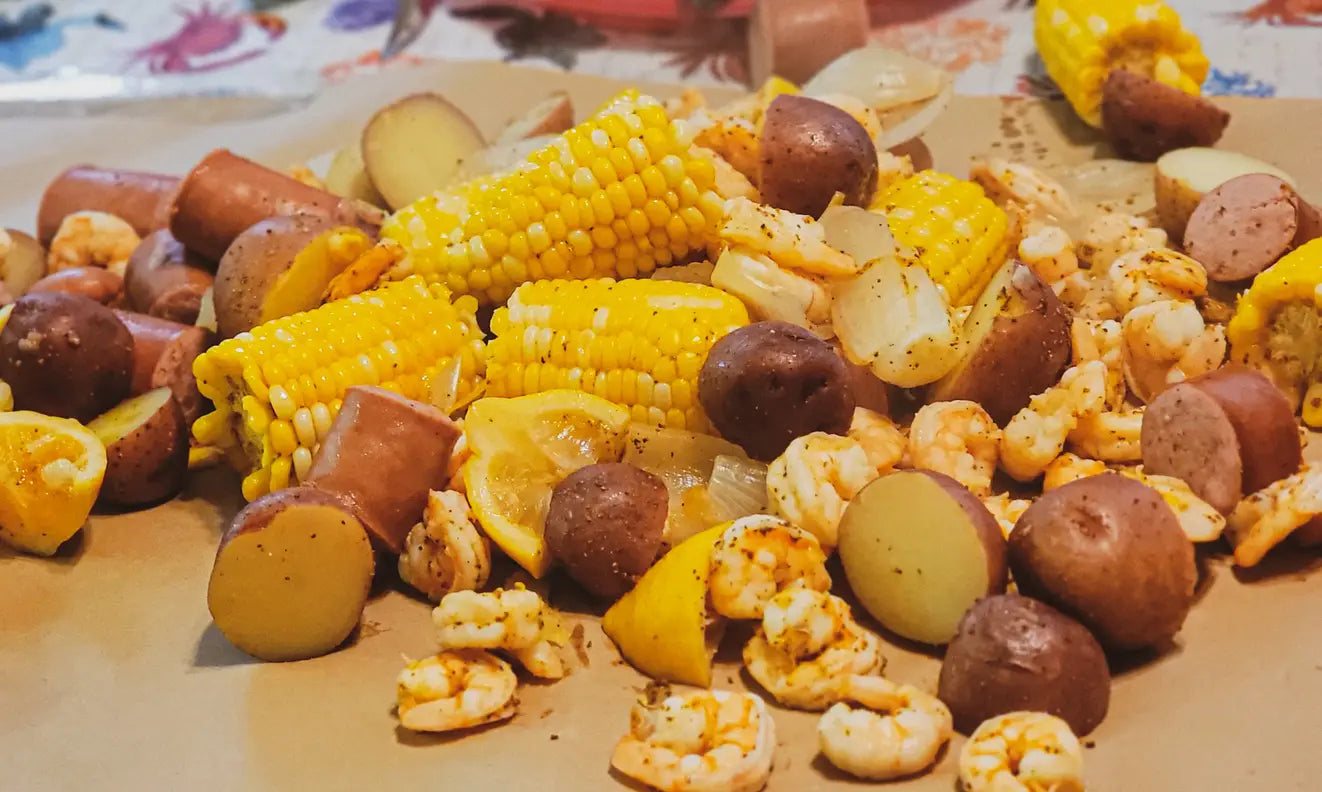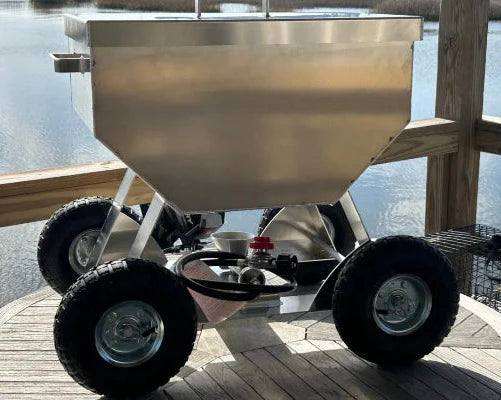
Outdoor Cooking Hacks for Perfectly Boiled Shellfish
The Basics of Boiling Shellfish Outdoors
Boiling shellfish outdoors is a time-honored tradition that combines the joy of fresh seafood with the thrill of open-air cooking. Whether you're hosting a backyard gathering, camping by the lake, or enjoying a day at the beach, the process begins with understanding the essentials. First, you'll need a reliable heat source, such as a propane burner or a Charleston Seafood Cooker, and a large, sturdy pot capable of holding both the shellfish and the boiling liquid. A pot with a built-in strainer basket is ideal, as it makes draining and serving much easier.
Water is the primary medium for boiling shellfish, but don't underestimate the importance of seasoning it. A well-seasoned boil starts with salt, but you can elevate the flavor by adding spices like Old Bay, Cajun seasoning, or a mix of paprika, garlic powder, and cayenne. The goal is to infuse the shellfish with flavor as they cook.
Timing and preparation are also key. Shellfish like shrimp, crab, and lobster cook quickly, so it's important to have all your ingredients prepped and ready before you start boiling. This includes cleaning the shellfish, chopping any additional ingredients, and setting up your cooking station. Outdoor cooking can be unpredictable, so having a plan ensures everything runs smoothly.
Finally, consider the environment. Cooking outdoors means dealing with wind, uneven surfaces, and sometimes limited resources. Choose a flat, stable surface for your burner and pot, and keep safety equipment like oven mitts and a fire extinguisher nearby. With these basics in place, you're ready to dive into the art of outdoor shellfish boiling.
Choosing the Right Equipment for Outdoor Shellfish Cooking
The right equipment can make or break your outdoor shellfish boil. Start with the pot, which should be large enough to accommodate your shellfish and any additional ingredients like corn or potatoes. A 30-quart aluminum or stainless steel stockpot is a popular choice for its durability and capacity. If you're cooking for a smaller group, a 16-quart pot may suffice. Look for pots with a perforated basket insert, as this makes it easier to lift the shellfish out of the boiling water without spilling.
For even better results, try one of our seafood cookers. Capable of handling oysters, crabs, shrimp...even boiled peanuts. If want to steam it or boil it, you need a Charleston Oyster Cooker.
For the heat source, propane burners are the gold standard for outdoor cooking. They provide consistent, high heat and are portable enough to use in various settings. Look for a burner with adjustable heat controls and sturdy legs to support the weight of a full pot. If you're cooking on uneven ground, consider a burner with adjustable feet for added stability.
Accessories can also enhance your cooking experience. Long-handled tongs and slotted spoons are essential for handling hot shellfish safely. A meat thermometer can help you monitor the water temperature, ensuring it stays within the ideal range for cooking. Don't forget a large cooler to keep your shellfish fresh before cooking and a sturdy table for prep work.
Portability is another factor to consider. If you're camping or cooking at the beach, lightweight and collapsible equipment can make transportation easier. Many outdoor cooking kits are designed with portability in mind, offering compact burners and foldable tables. Investing in high-quality, durable equipment ensures you'll be ready for many outdoor shellfish boils to come.
Preparing Shellfish for Boiling: Cleaning and Seasoning Tips
Proper preparation is crucial for a successful shellfish boil. Start by cleaning your shellfish thoroughly to remove any sand, grit, or debris. For clams and mussels, soak them in cold, salted water for 20-30 minutes to encourage them to expel any sand. Scrub the shells with a stiff brush and remove the "beard" from mussels by pulling it away with your fingers. Shrimp should be deveined and rinsed, while crabs and lobsters can be rinsed under cold water to remove any surface dirt.
Once cleaned, it's time to season. While the boiling liquid will impart most of the flavor, pre-seasoning your shellfish can add an extra layer of taste. For shrimp, consider a light marinade of olive oil, garlic, and lemon juice. Crabs and lobsters can be brushed with melted butter and sprinkled with a pinch of salt and pepper.
Avoid common mistakes like over-seasoning or skipping the cleaning process. Sand or grit in your shellfish can ruin the dining experience, and too much seasoning can overpower the natural sweetness of the seafood. Take your time during this step to ensure your shellfish are clean and ready to absorb the flavors of the boil.
Perfecting the Boiling Process: Temperature and Timing Hacks
The key to perfectly boiled shellfish lies in controlling the temperature and timing. Start by bringing your water to a rolling boil, then reduce it to a simmer before adding the shellfish. This prevents the water from splashing or boiling over when you add the seafood.
Different types of shellfish require different cooking times. Shrimp, for example, cook in just 2-3 minutes, turning pink and opaque when done. Crabs take about 15-20 minutes, while lobsters need 8-12 minutes depending on their size. Overcooking is a common mistake that can result in rubbery textures, so keep a close eye on the clock.
A meat thermometer can be a helpful tool for monitoring the water temperature. Aim for a steady simmer at around 180-200°F (82-93°C). This ensures even cooking without over-agitating the shellfish.
To test for doneness, look for visual cues. Shrimp should be pink and firm, crabs should have a bright red shell, and lobster meat should be white and opaque. If you're unsure, remove a piece and cut into it to check the texture.
Flavor Boosters: Adding Aromatics and Ingredients to Your Boil
Aromatic ingredients can transform a simple shellfish boil into a flavorful masterpiece. Start with the basics: garlic, onions, and lemons. These add a robust, zesty base to your boiling liquid. Herbs like thyme, bay leaves, and parsley can also enhance the flavor profile.
For a more complex boil, consider adding vegetables and proteins. Corn on the cob, red potatoes, and sausage are classic additions that complement the sweetness of shellfish. Slice the potatoes into even pieces to ensure they cook at the same rate as the shellfish.
Spices are another way to customize your boil. Old Bay seasoning is a popular choice, but you can also experiment with Cajun blends, chili flakes, or smoked paprika. Add these to the water early to allow the flavors to infuse fully.
Don't forget the finishing touches. A sprinkle of fresh parsley or a squeeze of lemon juice can brighten the dish just before serving. These small additions can make a big difference in the overall flavor.
Outdoor Cooking Safety Tips for Shellfish Boils
Safety should always be a priority when cooking outdoors. Start by ensuring your cooking area is stable and free of flammable materials. Place your burner on a flat surface and keep a fire extinguisher or bucket of water nearby in case of emergencies.
When handling shellfish, always keep them chilled until you're ready to cook. Use a cooler with plenty of ice to maintain a safe temperature. Discard any shellfish with cracked shells or an unpleasant odor, as these may be unsafe to eat.
Be cautious when working with boiling water. Use long-handled tools to avoid burns, and never leave the pot unattended. If you're cooking with children or pets nearby, establish a safe zone around the cooking area to prevent accidents.
Creative Serving Ideas for Outdoor Shellfish Boils
Presentation is part of the fun when serving boiled shellfish outdoors. Spread a large sheet of butcher paper or newspaper over a picnic table and pour the shellfish and accompaniments directly onto it. This creates a communal, hands-on dining experience that's perfect for outdoor gatherings.
Offer a variety of dipping sauces to enhance the flavors. Classic options include melted butter, cocktail sauce, and garlic aioli. For a spicy kick, try a sriracha mayo or a Cajun remoulade.
Side dishes can round out the meal. Cornbread, coleslaw, and a fresh green salad are excellent choices that pair well with the rich flavors of shellfish. Provide plenty of napkins and wet wipes, as eating shellfish can get messy.
Troubleshooting Common Shellfish Boiling Issues
Even experienced cooks can encounter challenges when boiling shellfish. If your shellfish are tough or rubbery, it's likely due to overcooking. Reduce the cooking time and monitor the texture closely in future attempts.
Uneven cooking can occur if the pot is overcrowded. Ensure there's enough space for the shellfish to move freely in the boiling water. If necessary, cook in batches to maintain even heat distribution.
Bland flavors are often the result of under-seasoned water. Be generous with your spices and aromatics, and taste the water before adding the shellfish to ensure it's well-seasoned.
Sustainable Shellfish Choices for Eco-Friendly Outdoor Cooking
Choosing sustainably sourced shellfish is an important step in minimizing your environmental impact. Look for certifications like the Marine Stewardship Council (MSC) label, which indicates that the seafood was harvested responsibly.
Opt for local shellfish whenever possible to reduce the carbon footprint associated with transportation. Research the fishing practices in your area and support vendors who prioritize sustainability.
Pro Tips for Hosting a Memorable Outdoor Shellfish Boil
Hosting an outdoor shellfish boil is as much about the experience as it is about the food. Start by planning your menu and gathering all necessary equipment in advance. Create a checklist to ensure you don't forget anything, from the propane tank to the seasoning mix.
Set up your cooking station in a central location where guests can watch and participate. Provide plenty of seating and shade, and consider playing music to set the mood.
Encourage guests to get involved by assigning tasks like chopping vegetables or stirring the pot. This creates a sense of community and makes the event more interactive.


